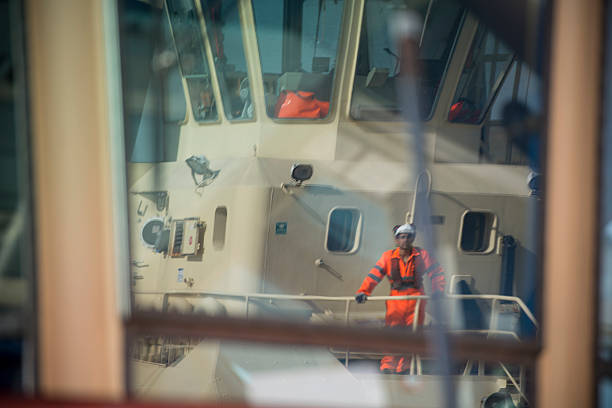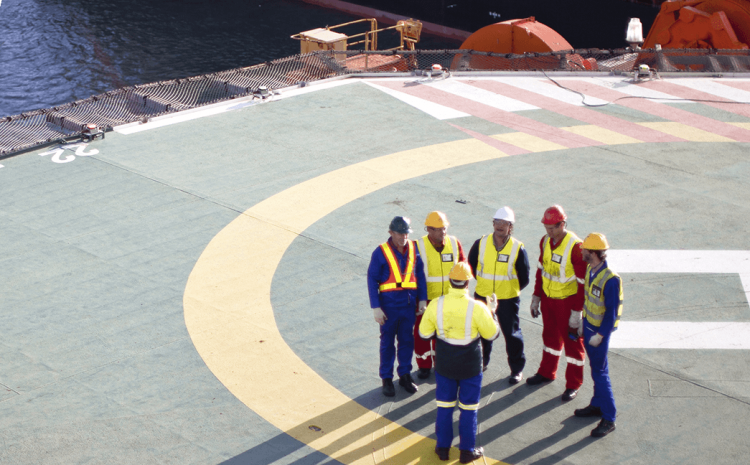Shell’s former shipping chief says safety must regain priority status

Grahaeme Henderson
Together in Safety Chairman
The problem with chasing so hard after the decarbonisation agenda and digital technologies is that ship operators might overlook the basics of shipping, namely, safety. The overwhelming drive for decarbonisation is not helping the industry to improve levels of safety, says Grahaeme Henderson.
Safety on ships has slipped from the top of the corporate agenda, pushed aside by the urgency of decarbonisation goals and the rush to implement digital technologies.That is a major mistake, according to Grahaeme Henderson, the former head of Shell Shipping and now chairman of the Together in Safety coalition. He argues that safety is the solid foundation that supports every activity in the company.
“It is often said that if you get the safety right, you get everything right. A good safety record leads to a healthy employee culture, positive publicity, and a glowing reputation for a company.” Dr Henderson believes there is no excuse for neglecting such a fundamental part of the shipping industry.
Despite years of effort to address the causes of accidents and incidents, shipping remains one of the world’s most hazardous industries. While air, rail, nuclear and construction, have all made improvements in their safety performance, this is not the case for shipping. A study by Allianz, the financial services business, found that reported incidents in 2021 increased 10% year on year. These cover a range of events from physical risks like collisions and res to psychological ones like mental health and social wellbeing.
Mental health at sea is a particular challenge to crew safety. There are many interconnecting causes with risk factors that are inherent to the environment and nature of the work. Loneliness, lack of space, fatigue, irregular sleeping patterns, under-resourcing and multi-tasking, and toxic management culture and inexperience all cause mental health issues or exacerbate underlying conditions. A supportive management structure helps to ensure seafarers are able to take due care of their mental health. Senior staff can cultivate an atmosphere of tolerant, open discussion to create a work culture that protects mental health, rather than stigmatises it.
Studies by the UK government into seafarer suicides, and by the International Seafarers’ Welfare and Assistance Network into the strains on seafarers’ mental health while at sea, underline not only the scale of the concern but also the impact it has on business reputation, employee sentiment and, ultimately, financial performance.
As a former chief executive, Dr Henderson identifies the senior leadership team as crucial for a ship to remain as safe as possible.“I have seen good leadership applied,” he says. “Safety must be the overriding aspect.”

Safety goes far beyond following procedures. It incorporates the crew’s responsibility to report unsafe practices if they are unsure, and senior management’s responsibility to devise and follow risk assessments and training sessions to help reduce the risk of preventable personnel accidents.The challenge of making the changes necessary to put safety back at the top of the agenda is the motivation for Together in Safety. The coalition has linked influential maritime organisations to draw on their collective expertise, while emphasising there is no immediate need for more regulation.
Current partners include the International Chamber of Shipping, BIMCO, OCIMF, Intertanko, Intercargo, Interferry, CLIA and the World Shipping Council. Although it includes major shipping companies, insurance, classification societies and country representatives, there are as yet no traders or charterers on the list. Links have been established with the International Air Transport Association and the Rail Standards and Safety Board to learn important safety lessons from those sectors. Together in Safety’s core objective is to protect seafarers’ lives while delivering improved business efficiency and commercial effectiveness. A key building block is the ‘Framework of Strategic Drivers’: Leadership, incident prevention, and wellbeing and care.
Dr Henderson believes visible safety leadership must stem from the right behaviours and mindset modelled by the senior leadership team.
“Every conversation must start with safety,” he said. Leaders visit people on the front line, review progress, and take corrective action where required. Modules and guidelines are available to help leaders develop a vision and plan, improve engagement, and facilitate collaboration.
“So often, when a major incident occurs, procedures have been found to be in place but the application is lacking. The framework encourages verification that what you think is happening has actually occurred in practice.”Regarding incident prevention, detailed analysis of major shipping incidents across all shipping sectors has concluded that the same types of incident — collisions, groundings, ships on re, lost containers, people falling overboard — happen again and again. Together in Safety focuses on 14 categories of major incident types, and has outlined a set of safety rules, including guidelines and best practice, training and engagement tools, and checklists of areas that have highlighted major issues.
For the third safety driver, the initiative includes recommendations to deliver a high-quality wellbeing and care programme and improve seafarer mental health. This is key to developing a healthy, happy and high-performing team. The safety coalition is addressing the challenges of the entire industry in a collaborative way, using its combined collective knowledge and expertise for the benefit of all. But although the work is industry-wide, the motivation is very simple. “We owe this to the crew members who work for us, as they entrust their safety in us and we need to look after them as if they were one of our family,” he says.
Interview by Richard Clayton

